Cornbread – A Must at Our Thanksgiving Table
There’s something undeniably comforting about a warm slice of homemade cornbread. Whether served alongside a hearty stew, enjoyed as a snack, or used to soak up the last bits of a delicious soup, cornbread is a beloved staple that adds a touch of coziness to any meal. With its golden crust and tender crumb, this classic Southern favorite is simple to make and flavorful.
In this blog post, we’ll explore a tried-and-true cornbread recipe that’s easy to prepare and incredibly satisfying. Using just a few basic ingredients—cornmeal, flour, eggs, butter, and buttermilk—you’ll create a cornbread that’s perfectly moist, subtly sweet, and wonderfully crumbly. The recipe highlights the key steps to balance a crispy exterior and a soft, buttery interior.
This cornbread recipe is a versatile addition to your recipe collection, perfect for beginners and seasoned bakers alike. It’s great for everyday meals or special occasions and can even be customized with add-ins like cheddar cheese, jalapeños, or fresh herbs. Ready to make your kitchen smell amazing and enjoy a comforting treat? Let’s get started on this delightful cornbread recipe!
Cornbread History
Cornbread has a rich and varied history that traces back to indigenous peoples of the Americas and has evolved significantly over centuries. Here’s a brief overview of its historical journey:
- Indigenous Origins: Its roots are deeply embedded in Native American cuisine. Indigenous peoples of the Americas cultivated maize (corn) long before European contact. They used corn in various ways, including grinding it into meal and mixing it with water to make a simple, flatbread-like product.
- Colonial America: When European settlers arrived in the New World, they adopted many Native American food practices, including corn. It became a staple in the diet of early American colonists, particularly in the South, where corn was abundant and affordable. Early recipes were simple and often included just cornmeal, water, and sometimes fat.
- Southern Tradition: Cornbread became a cornerstone of Southern cuisine in the Southern United States. Over time, recipes evolved to include additional ingredients such as buttermilk, eggs, baking powder, or soda to leaven the bread and make it lighter. This version of cornbread is often associated with Southern hospitality and traditional comfort food.
- Modern Variations: Today, cornbread continues to be a beloved dish with many regional variations. Some recipes include cheese, jalapeños, or bacon, while others maintain the traditional simplicity. It remains a versatile and enduring part of American culinary traditions.
Cornbread’s history reflects its adaptability and enduring appeal, making it a cherished food that connects modern eaters with a rich cultural heritage.
Corn Bread Recipe Cooking Tips
Here are some essential tips for making perfect cornbread:
- Use Quality Cornmeal: Opt for stone-ground cornmeal for a more flavorful, textured cornbread. It often has a richer taste and coarser texture than finely ground cornmeal.
- Preheat Your Oven: Preheat your oven to ensure it’s hot before you bake the cornbread. This helps achieve a crispy crust and even baking.
- Preheat the Pan: For a crispy exterior, preheat your cast-iron skillet or baking pan in the oven before pouring in the batter. This step is crucial if you’re using a skillet.
- Don’t Overmix: Mix the batter just until the ingredients are combined. Overmixing can result in a dense, tough cornbread.
- Use Buttermilk: For a tangy flavor and tender crumb, use buttermilk instead of regular milk. If you don’t have buttermilk, substitute it with milk mixed with a tablespoon of lemon juice or vinegar.
- Add Sweetness: Adjust the amount of sugar in the recipe to suit your taste. Some people prefer a sweeter cornbread, while others like it less sweet.
- Incorporate Add-ins: Enhance your cornbread by adding ingredients like shredded cheese, chopped jalapeños, or fresh herbs. Ensure the batter is not overloaded with add-ins to maintain the proper texture.
- Check for Doneness: Insert a toothpick or cake tester into the center of the cornbread. If it comes out clean, the cornbread is done. Avoid overbaking, as this can dry it out.
- Let It Cool: Allow the cornbread to cool slightly before slicing. This helps it set and makes it easier to cut into neat pieces.
- Serve Warm: Cornbread is best enjoyed warm, straight from the oven, with a pat of butter or a drizzle of honey.
These tips will help you achieve a delicious, well-textured cornbread every time.
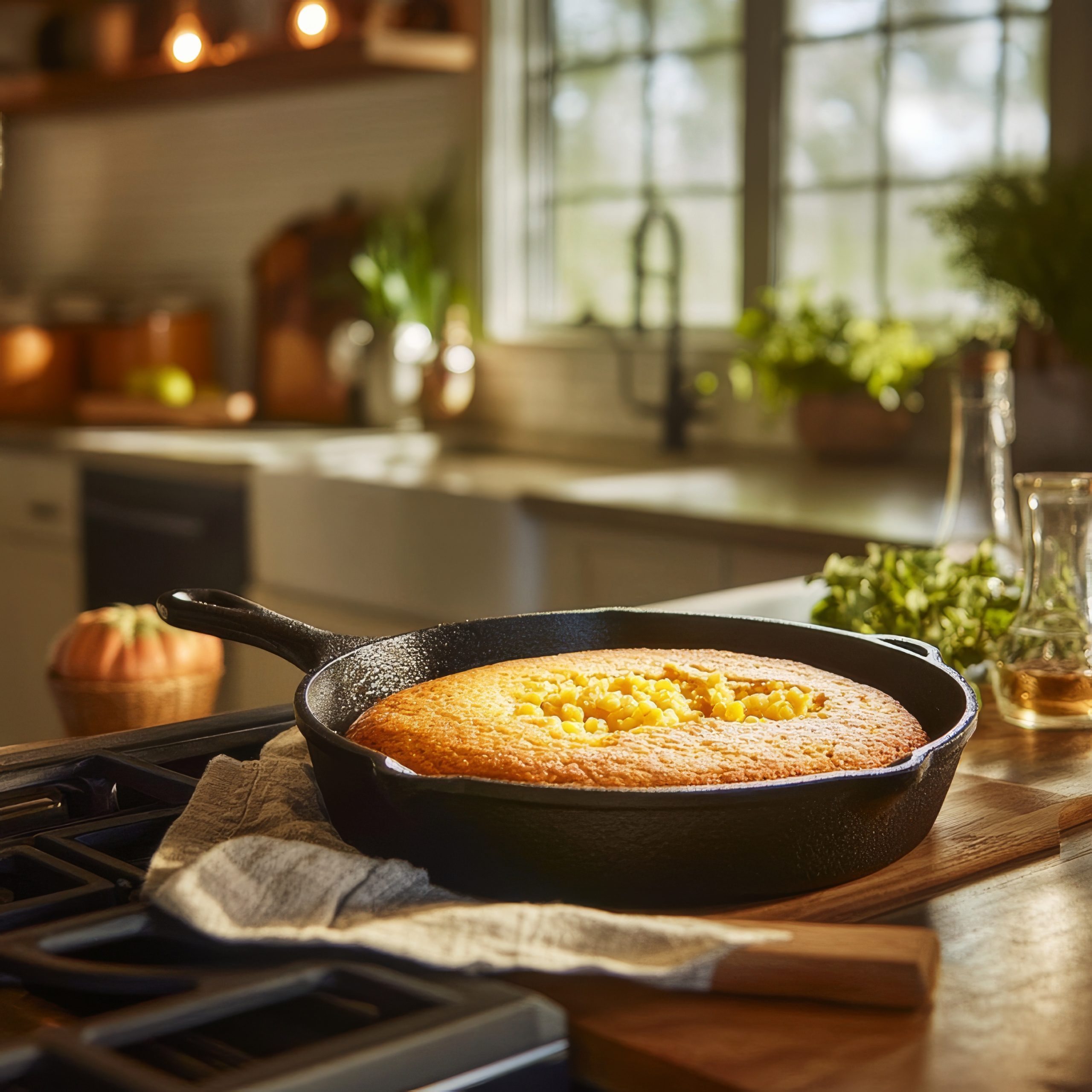
Fun Facts
Native American Roots: Cornbread originates in Native American cuisine, where corn was ground into meals and used to make early versions of the bread long before European settlers arrived.
No Wheat, No Problem: Early settlers relied on cornbread because wheat was scarce in the Southern U.S., but corn was plentiful. Cornbread became a staple because it was easy to make and used locally available ingredients.
Variations: Cornbread comes in many forms, from soft, cake-like versions in the North (often sweetened with sugar) to the denser, crispier Southern version made in a cast-iron skillet.
Historical Popularity: Cornbread was a crucial food during the American Civil War. Soldiers from both sides often carried cornbread with them, and it was an easy and filling source of calories.
Cornmeal and Hot Water: A classic Southern variation called “hot water cornbread” uses only cornmeal, hot water, and fat, making it simple but delicious. This cornbread is often fried, resulting in a crispy texture on the outside and a soft center.
Cornbread Recipe
Ingredients
- 1⅓ cups coarse stone-ground yellow cornmeal
- 1 cup unbleached all purpose flour
- ¼ cup sugar
- 2 teaspoons baking powder
- ¾ teaspoon kosher salt
- 1 cup buttermilk plus 2 tablespoons
- 9 tablespoons unsalted butter melted
- 1 large egg plus 1 large egg yolk, beaten to blend.
Instructions
- Mix the cornmeal, flour, sugar, baking powder and salt in a bowl.
- Add the buttermilk, the melted butter and beaten eggs. Stir everything together until smooth. This now has to stand for 30 minutes so the cornmeal can absorb the liquids. Now's a good time to preheat the oven to 375° F.
- Grease the pan with some butter or spray oil and pour the batter into it. Bake the bread until the edges turn brown and test it with a toothpick by sticking it into the cake. If it comes out clean you are done. This should take about 40 minutes.
- The bread needs to rest for at least 5 minutes before taking out of the pan. Let the bread cool on a rack so air circulates all around it if you have one.
- You can make this bread 2 days before you are going to use it. Just be sure to wrap it up tight and store at room temperature. When ready to use, cut it up into serving sizes. This is a great bread to use to sop up some of that turkey gravy left on the plate.

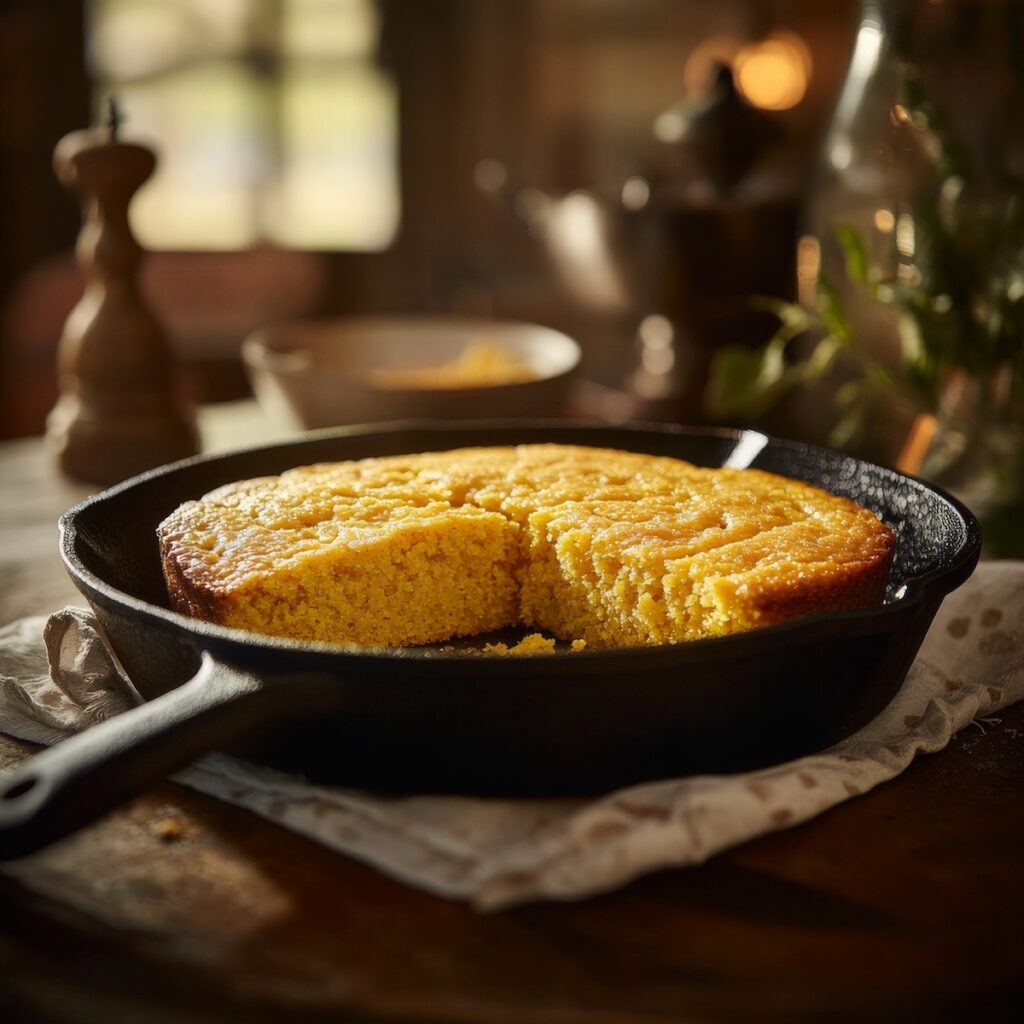




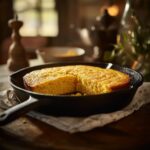
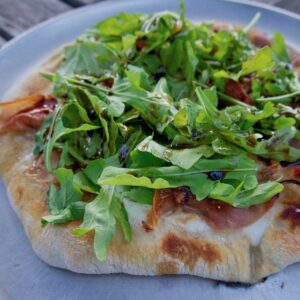
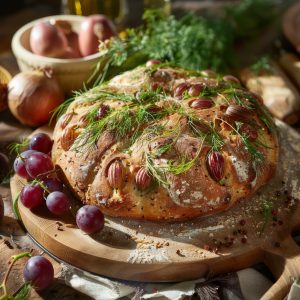
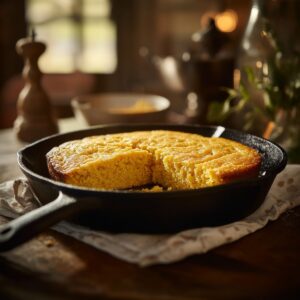
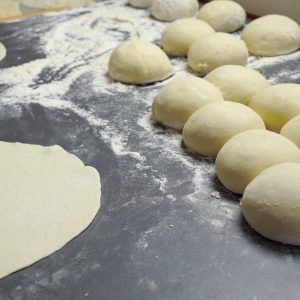
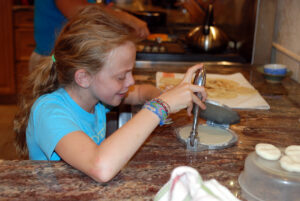
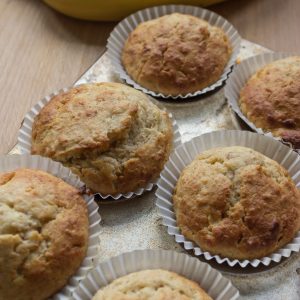
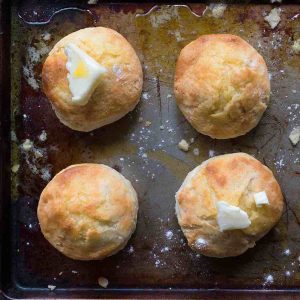
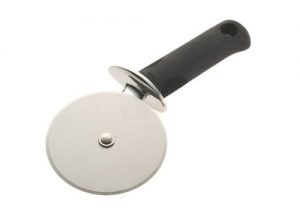


4 Responses
What a beautiful cornbread! I’m going to try it & use a round pan too. Did your wife make any other recipes you’d care to share?
This would be even better baked in an old-fashioned iron skillet, especially one that is old and well seasoned. My mother had an iron skillet with a long handled lid. She baked cornbread in the lid, though probably a smaller batch than your recipe calls for; hers turned out about 3/4″ thick and was a bit crispy. Yum!
I always bake my corn bread in the big cast iron skillet, it turns out wonderful. I also bake pineapple upside down cake in it. It turns out terrific every time!
I see several things wrong with the recipe.
1. Wrong color cornmeal. Cornbread should be made with WHITE cornmeal.
2. Sugar in cornbread? Are you making bread or cake?
3. As stated above. Use a cast iron skillet.
I’ll stop with those three.
Hi LaDawg, did you even try preparing this recipe before making your comments? Give it a try Mikey, I think you’ll like it. – RG